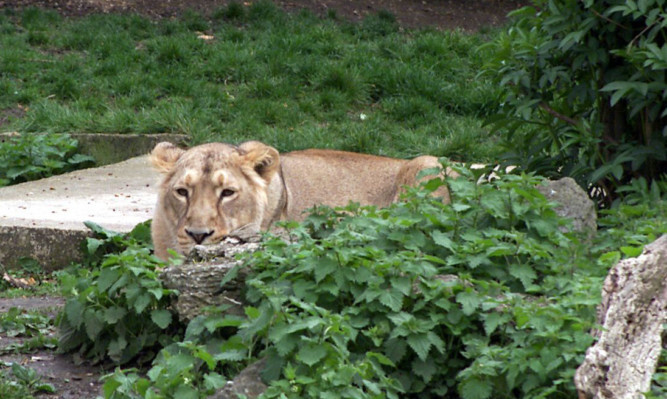
Rail experts want lion faeces spread on train lines to stop deer from wandering on to the tracks.
There’s been a huge increase in the number of wild deer being struck by trains. It’s believed the pungent smell of lion excrement frightens them off.
Now the Rail Safety and Standards Board (RSSB) say the deterrent could be used alongside “properly erected and maintained deer fences”.
They believe the step may dramatically reduce the chances of a potentially fatal deer-strike-derailment, for very little outlay.
Rail bosses have previously laced tracks with pungent lion dung to stop deer leaping onto tracks in rural Wakayama, Japan. A three-month trial saw the number of deer killed fall to zero.
The same deterrent could be used in Britain to cut the number of deer killed by trains, following a three-fold rise in the past decade, experts have said.
Rail expert Philip Marsh, who has worked for Virgin and Railtrack, said: “Animals on the line are a serious cause of derailment. More and more railways are sharing best practice around the world and if this has worked in Japan, they should go for it here.”
In 2012/13 alone, 211 deer were struck by trains across Britain’s railway network, according to a RSSB report published earlier this year. Scotland saw the second highest rise in the number of deer killed on the lines up 190% on the 2004 figure. And in a chilling reminder of one of Britain’s worst rail disasters, trains hit cattle 49 times.
Thirteen people were killed and 14 more badly injured when a “push-pull” commuter train was derailed after hitting a cow on the track in Polmont, near Falkirk, in 1984. The report highlighted vandalism and poor maintenance of fencing as the main causes of animals getting onto railway tracks.
Last night, National Rail said despite the rise in the number of deer killed, the overall number of animals meandering onto rail tracks has fallen by 40% in the past decade.
A spokesman said: “We use fences, and natural screens such as thorny shrubs, to mark the boundary of our land. They can also serve as a useful deterrent to keep the railways safe from trespassing and vandalism.
“We work hard to keep them safe by making sure our fences are in good condition and are suitable for deterring people and animals from getting onto the tracks.”
The RSSB believes the smelly spray could provide an “effective” way of stopping a deer strike wreck.
The British Deer Society said: “A concentrated liquid extract of lion dung has been formulated and initial trials indicate that it may be successful in keeping deer out of silage fields for several weeks.”Related: Train drivers jump red lights five times a week

Enjoy the convenience of having The Sunday Post delivered as a digital ePaper straight to your smartphone, tablet or computer.
Subscribe for only £5.49 a month and enjoy all the benefits of the printed paper as a digital replica.
Subscribe